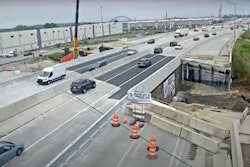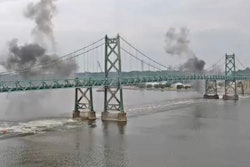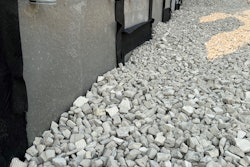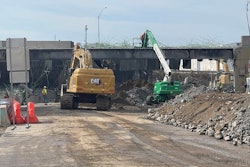EarthCam has released a new time-lapse video showing the six-day emergency repair of I-95 in Philadelphia where a tanker crash caused an overpass to collapse.
The video condenses the six-day rebuild in which a backfill made of recycled glass, called ultra-lightweight foamed glass aggregate or UL-FGA, was used to build up and support temporary lanes after the damaged section had been demolished.
{Related Content: Collapsed I-95 Reopens in Philadelphia After Rapid Repair}
The crash occurred June 11 when a tanker carrying gasoline hit a wall while exiting the highway in northeast Philadelphia and overturned. The fire caused the steel supports on the northbound overpass bridge to collapse. The southbound lanes were severely damaged. The I-95 section carries 160,000 vehicle a day.
The six new temporary lanes – three headed south and three headed north – opened June 23. Speed is restricted to 45 mph on the temporary lanes.
For the permanent overpass, bridges will be built beside the temporary lanes. When those are completed, traffic will be diverted to those bridges, and the temporary lanes will be demolished. The center section of the permanent overpass will be built to replace the temporary lanes.
The backfill began arriving to the site on June 15, the same day demolition of the damaged structure was completed. It was produced by Aero Aggregates, based in Eddystone, Pennsylvania. The backfill was contained by walls built simultaneously. The backfill was then paved over to create the temporary overpass.
Buckley & Company was the contractor for the project and will also be the general contractor on building the permanent lanes.
{Related Content: Rebuild of I-95 Collapse Will Use Recycled Glass for Backfill}










